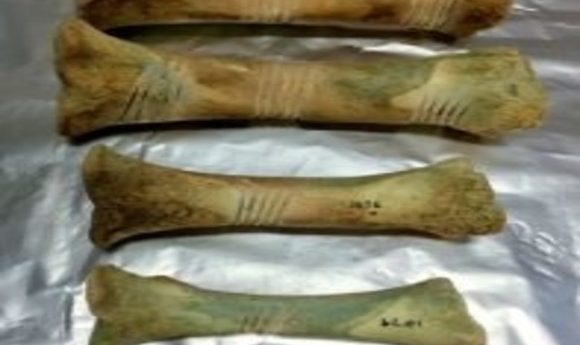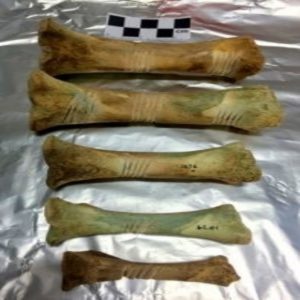Forensics gets worked to the bone

Will bone protein analysis become the latest tool in forensic science?

While skeletal remains offer valuable biological information for forensic scientists and archaeologists, data from bone proteins could potentially provide an even greater window into the life of deceased animals and humans—from more accurate species identification and evolutionary data, to more precise post-mortem interval information. However, scientists have lacked a reliable way to analyze and compare bone proteins between different animals, or even between different locations of the same bone in an individual.
Now, in the Journal of Proteome Research, researchers report characterizing bones and bone regions with a new approach that provides the most reproducible results for bone proteomic data analysis to date. The study also highlights particular proteins that may serve as biomarkers for determining the age of individuals.
“There are plenty of current methods for [determining] biological age of an individual, but when you only have small bone fragments or when a body is completely skeletonized, it becomes much harder,” said Noemi Procopio from the University of Manchester, first author of the study. “We wanted to focus on how proteomics could help in these areas, and this study demonstrates that proteins can indeed be helpful in forensics.“
For their study, the team extracted proteins from fresh and buried skeletons of pigs of various known biological ages. They analyzed subsamples from five distinct skeletal regions, including the femur, tibia, metatarsus, and scapula regions. Overall, they found the most reproducible proteomic compositions at the center of longer bone segments in locations distant from growth plates, such as in the femur and tibia midshaft regions.
“We expected to see greater differences between proteomes of different individuals, but instead observed much greater variations within a single bone, particularly towards the proximal ends,” said Procopio.
“As archaeologists and paleontologists are beginning to use this new protein analysis technique more regularly, understanding these variations is crucial in accurately interpreting the information locked away in ancient bones,” added the team’s leader, Michael Buckley.
Further analysis of protein compositions across different-aged skeletons showed that several serum proteins change in abundance with biological age. One serum protein in particular, called fetuin-A, noticeably decreased in abundance in older samples.
“If this biomarker is valid in humans, it could be extremely useful to many scientists in understanding the biological age of skeletal remains. But we now need to check larger samples of bones from different species to see if this holds true,” said Procopio. “It is an exciting start.”